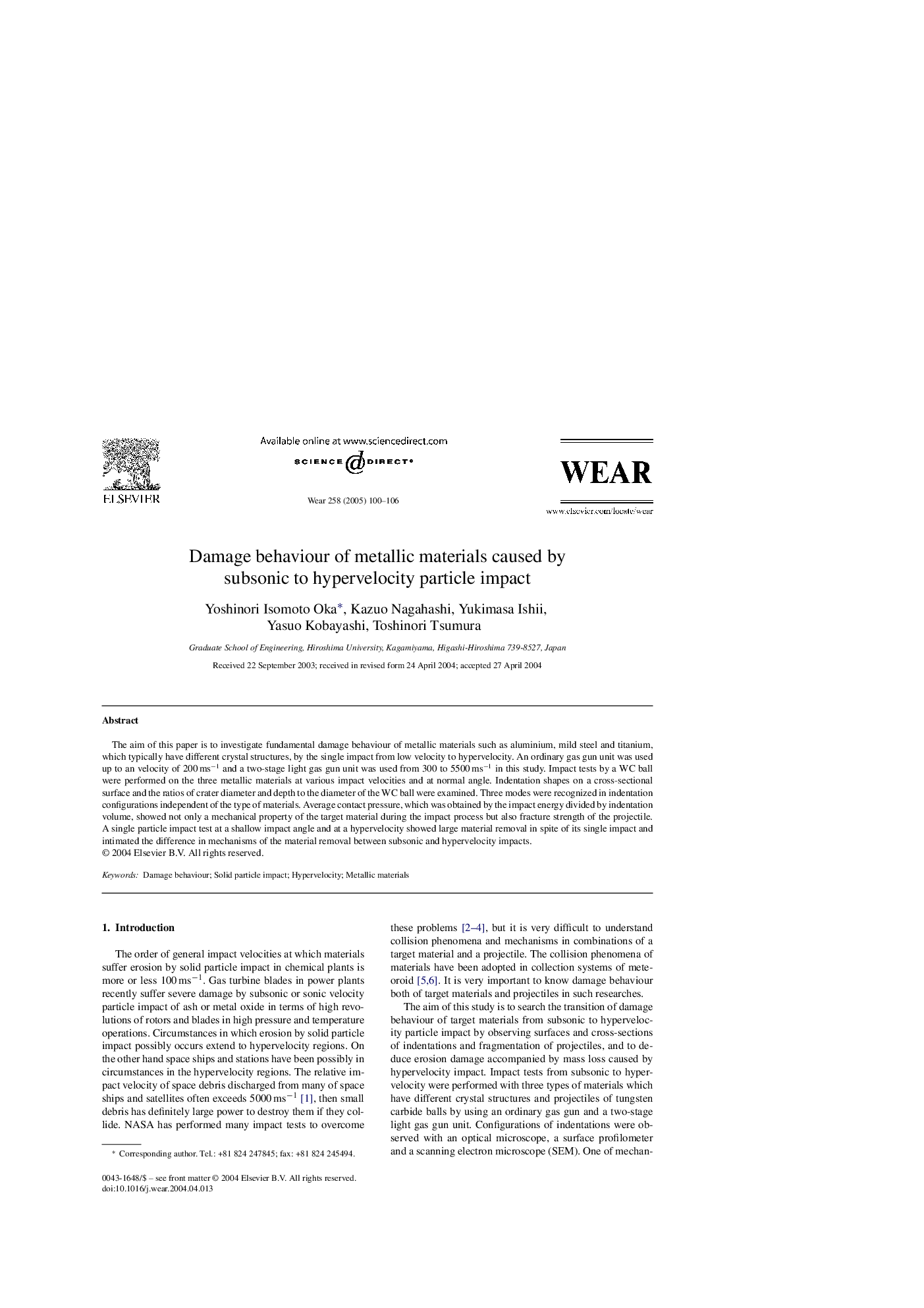| Article ID | Journal | Published Year | Pages | File Type |
|---|---|---|---|---|
| 9679600 | Wear | 2005 | 7 Pages |
Abstract
The aim of this paper is to investigate fundamental damage behaviour of metallic materials such as aluminium, mild steel and titanium, which typically have different crystal structures, by the single impact from low velocity to hypervelocity. An ordinary gas gun unit was used up to an velocity of 200Â msâ1 and a two-stage light gas gun unit was used from 300 to 5500Â msâ1 in this study. Impact tests by a WC ball were performed on the three metallic materials at various impact velocities and at normal angle. Indentation shapes on a cross-sectional surface and the ratios of crater diameter and depth to the diameter of the WC ball were examined. Three modes were recognized in indentation configurations independent of the type of materials. Average contact pressure, which was obtained by the impact energy divided by indentation volume, showed not only a mechanical property of the target material during the impact process but also fracture strength of the projectile. A single particle impact test at a shallow impact angle and at a hypervelocity showed large material removal in spite of its single impact and intimated the difference in mechanisms of the material removal between subsonic and hypervelocity impacts.
Related Topics
Physical Sciences and Engineering
Chemical Engineering
Colloid and Surface Chemistry
Authors
Yoshinori Isomoto Oka, Kazuo Nagahashi, Yukimasa Ishii, Yasuo Kobayashi, Toshinori Tsumura,
